
Anyone with compost worms knows how valuable the worm juice from their wormfarm can be as part of veggie growing. The trick is remembering to add it, and having a good method of applying it.
Last year Nick devised a way to passively add worm juice into our kitchen garden irrigation supply, via a rather clever little DIY setup.
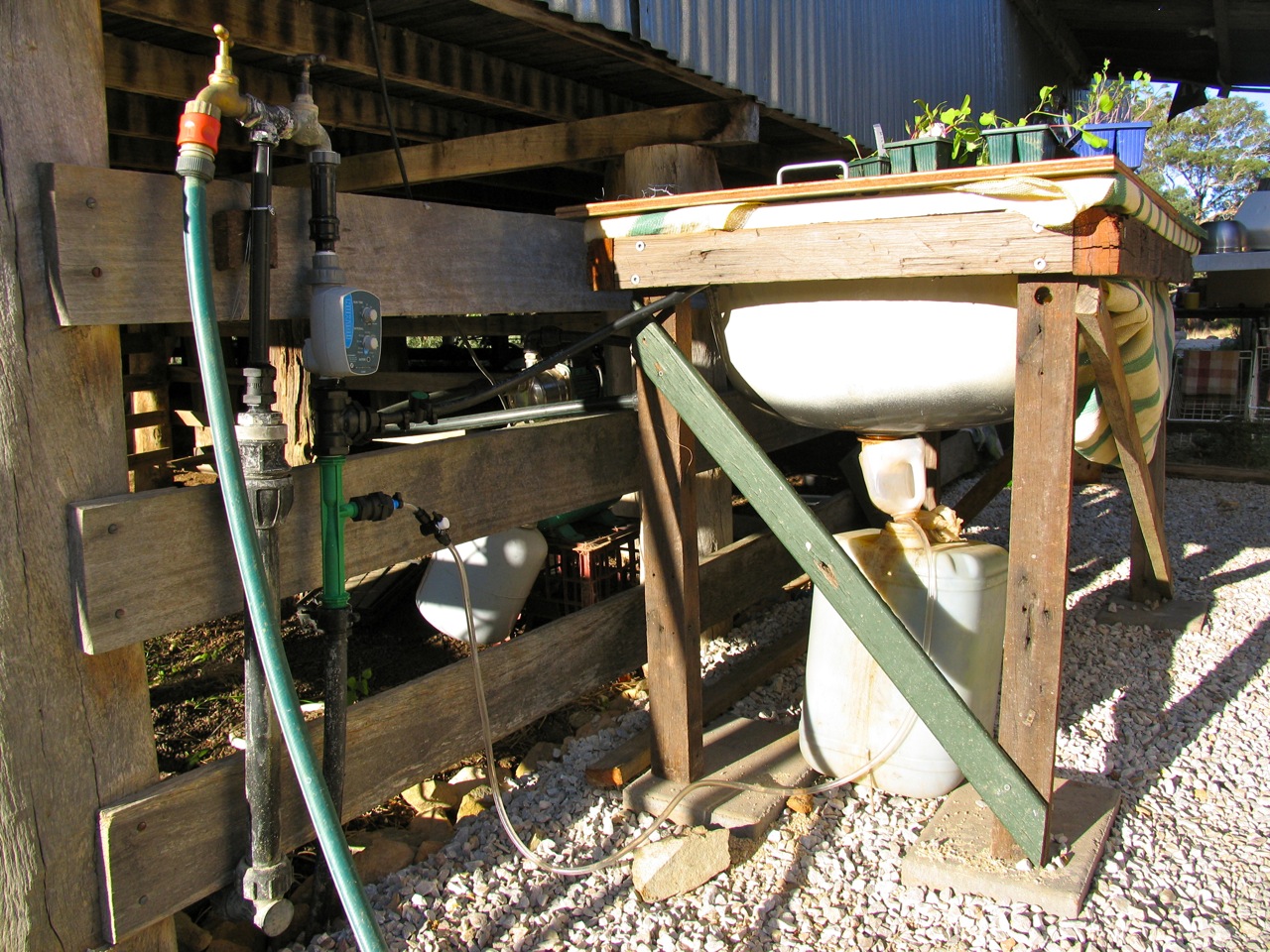
Our kitchen wormfarm setup, located in a bathtub. The worm juice drips out the plughole and into the container below, then self-injects into the irrigation line for the nearby kitchen garden…
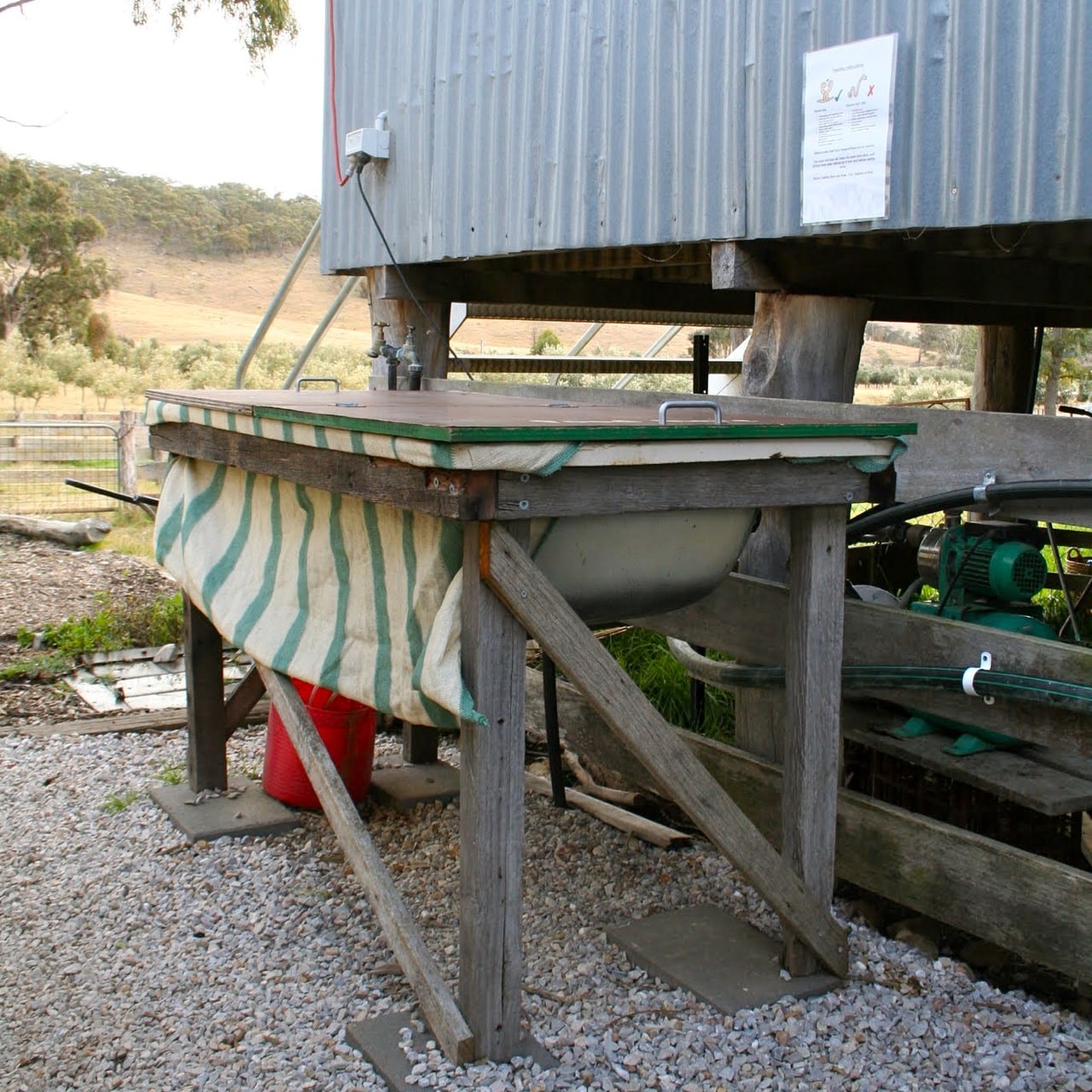
Worm farm complete and in commission! The stripey shade cloth provides a first-pass filter for the worm juice to escape from through the plughole

We fill one side up at a time, then simply flip the lid 180 degrees so that the other side becomes the deposit zone

This is the main tapline for the kitchen garden, which gets turned on by timer for about 30 minutes a day during growing season. The top black horizontal pipe in this pic provides a light spray to the wormfarm, for when it’s getting a bit dry. It can be turned off independently as needed
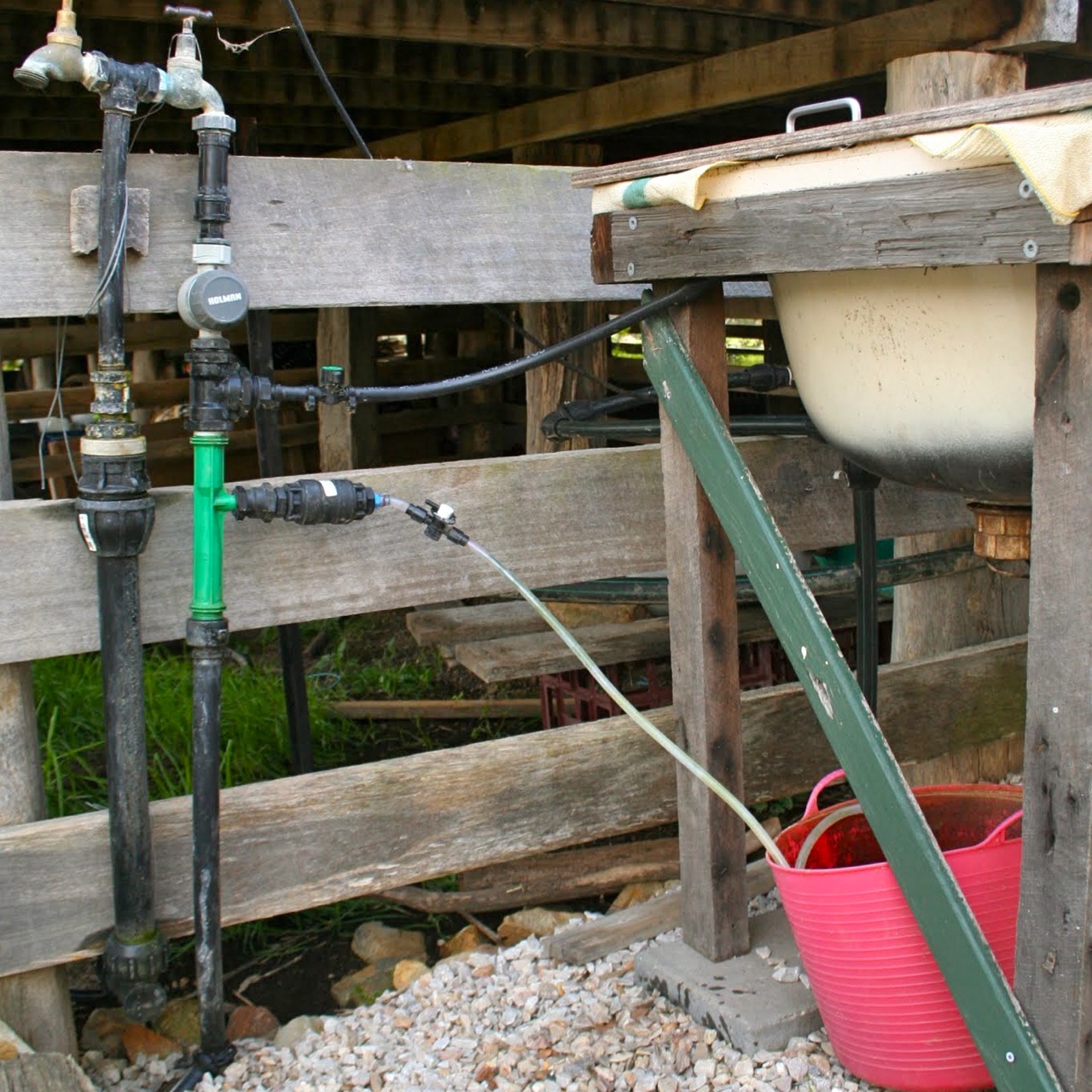
The bottom light-coloured line in this pic carries worm juice from the red bucket, where it collects after dripping out of the wormfarm, and into the irrigation system via venturi action. The little piece at the end of the clear tube in the photo is the key…. it’s called a fertigation injector, venturi injector or pressure differential injector.

The sucking end of the worm juice vertigation line, that sits in the red bucket with a filter on it to prevent gunk getting in the irrigation lines, and sucks up worm juice via a siphon effect as needed

So then, when the tap is turned on, the worm juice sucks out of the bucket via a siphon effect and joins the main vertical irrigation line, which heads off to the kitchen garden…

Setting up irrigation for the kitchen garden using recycled dripline. A frustrating but ultimately successful process.
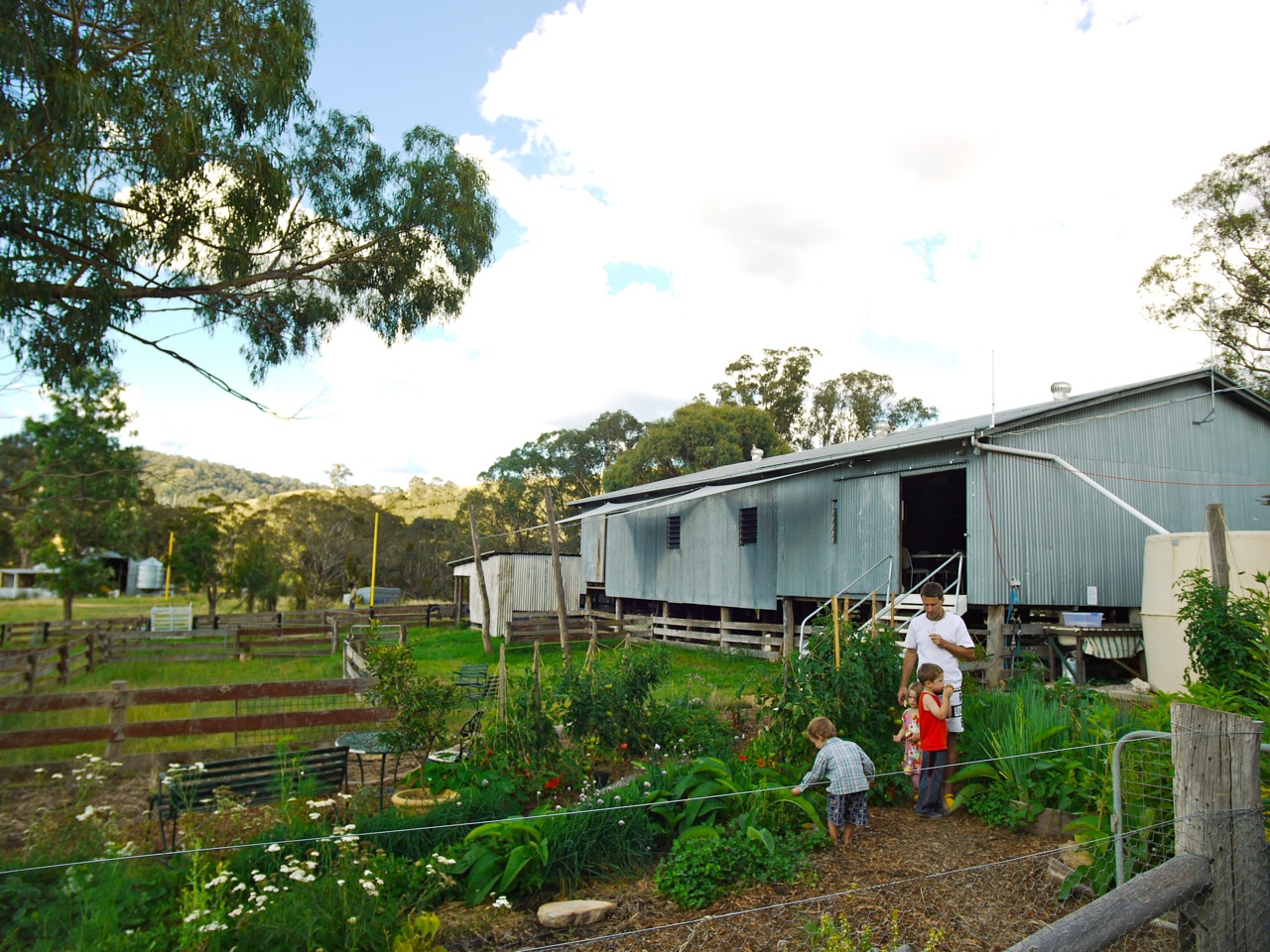
The kitchen garden in February 2012. Yielding plentiful herbs and veggies thanks in part to our vertigation setup! You can just see the wormfarm in this pic next to the white watertank.
So there you have it. A simple way to introduce worm juice into your irrigation watering cycle, while recycling kitchen wastes and cycling nutrients back through our farm. This system has been in place coming up to two years now, with no problems and lots of garden benefits. Pretty cool, eh?
We call it vertigation – a permaculture combo of fertigation (adding fertilizer to the irrigation line) and vermiculture (ie wormfarming).
We’re planning to add another system like this to the market garden in spring, to further increase the fertility down there as well.
>> More about Nutrient Cycling at Milkwood Farm
>> More about Appropriate Technology at Milkwood Farm
Cheers to Stephen Couling for some of the above process photos, and to Floyd Constable for the final shot.




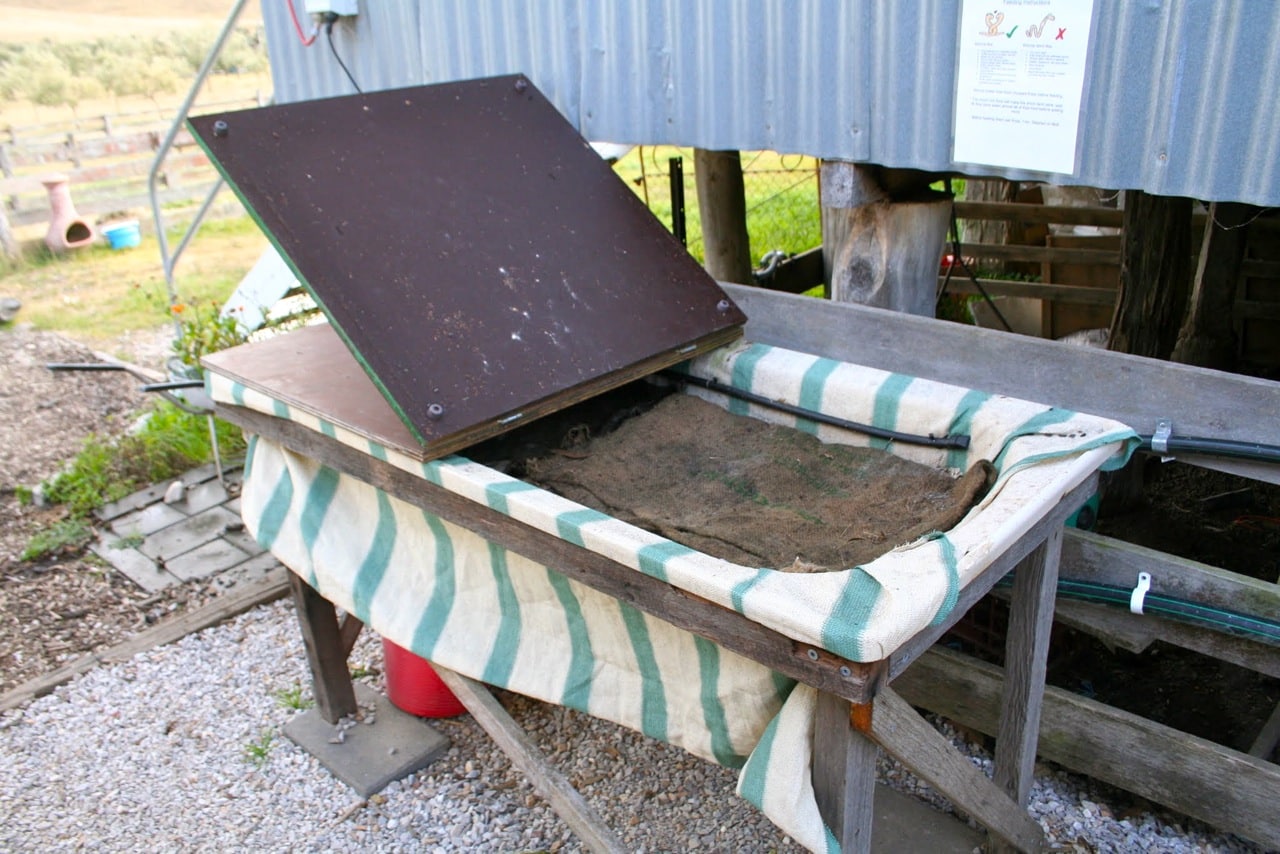















Bloody brilliant! Love the vertigation concept, but I am particularly taken with the worm farm lid, actually. We tried two sheets of timber hinged at the rear of our bathtub worm farm but struck hitches: (1) keeping the lid up while feeding worms is tricky; (2) sagging of the lid after weather exposure created gaps around the edge, allowing rodents in. Your centrally hinged design looks like it eliminates both of these problems. Is it regular plywood? While putting off renovation of our bathtub worm farm, I’ve used a temporary system which has turned out to be great for fruit… Read more »
This seems like a really excellent “solution” that I might like to work into my irrigation when I can get it installed. I’m curious how long it’s been running and how often the filter in the bucket needs cleaning or if that is just a non issue so far. Thanks for sharing.
Legendary stuff! I have often wondered how I might get the worm juice automatically into the irrigation. I didn’t think about a SIPHON! Thanks guys.
The little green piece in the photo is the key…. it’s called a fertigation injector, venturi injector or pressure differential injector. They can be quite hard to find and frankly a little over priced. If someone finds a reasonably priced, high quality small unit please share 🙂 I have a friendly local irrigation specialist who had an old one out the back that he sold to me on the cheap, but they may set you back up to $100. They can also be a little hard to set up as they need relatively high flow rates to the irrigation system… Read more »
Oh and turkeysong, I have been very pleasantly surprised to find that the filter never seems to block up… the flow rates are very low so not much in the way of solids gets lifted into the filter. We do keep the worm farm quite wet and the entire farm is encased in shade cloth so not much solid material can get to the drum at the bottom.
Thats a really cool setup. There is a new worm farm on the market though that makes harvesting both the worm juice and the worm castings really easy. It’s called a Hungry Bin. Because it is a continuous flow system you can easily capture the worm juice and divert it wherever you please. Though for most gardens just into a bottle is good enough. I capture mine and then feed it into my water channels that feed my bucket wicking garden, kinda like a wormponics system if thats a word. check out the hungry bin here http://www.hungrybin.com.au
had a look but can’t tell how it’s different (in essence) from a normal worm farm… says it can process 2kg of scraps a day? That sounds a bit overoptimistic, unless the scraps are finely pureed? Happy to be proven wrong, and it does look like a nice wormfarm, but…
Its a very clever design, the taper compacts the castings as they move down the system, that compaction forces the worms up the top (being surface feeders) where they do the work. That combined with the large surface area make the Hungry Bin very very efficient. The liquid released from the food moves down through the compacted castings flushing the nutrients out into the bottom tray. About 1 litre a week. Its an amazing system that does do as it says. I’d be happy to set you guys up with one, i love the work you do.
Sure! We’d be happy to try one out. Don’t get me wrong, i think any design that gets people processing their organic waste on-site into a useful resource is a good thing…
Yes Kirsten I agree its an expensive worm farm, I might put my hard $s into getting the injector. Dave, yes it is a clever design but I’m sure it can be built with recycled stuff at half the price.
Its a lot of fun making your own worm farm I agree, the patented design of the Hungry Bin is not something one can reproduce with bits and pieces however. It’s not just the process of worms eating your food scraps, it’s about the ease of use and the ease of harvesting the bi-products. We just exhibited it at the Nambour garden show and our biggest fans were those with either self-made worm farms or Reln type worm farms – why? because they understood the benefits of worm farming but were frustrated with the processes involved and the inefficiencies, they… Read more »
Is there a divider in your bathtub to keep the working contents separate from the finished castings? How much food does it require to keep that many worms happy? We made a worm bin out of stackable storage containers, but haven’t stocked it with worms yet.
Compost worms will, if in a happy healthy environment, consume their body weight in food waste per day. It is generally considered that 4,000 compost worms = 1kg. As the population will self-regulate the only issue is “over feeding” not under feeding. Over feeding will mean that the worms don’t have enough time to consume the food before its goes rotten and then anaerobic. Thats when you start getting the smells.
I’ve used a bath for a worm farm before they’re great! I designed a lid (that unfortunately was never made) that lifted in sections to allow the worms to travel but I think yours is a much simpler design that achieves the same goal. Do you have a layer of gravel below the shade cloth to enable easier drainage? As an aside, I’ve seen a worm farm full of citrus and the worms were loving it! Pretty sure they were regular compost worms too. I guess like many things, add citrus only in moderation, I wouldn’t go overloading any worm… Read more »
I too add citrus to my worm farm, it is OK if you have an efficient worm farm. Like you say though everything in moderation, if you just had a tequila party, hold off on all those squeezed lemons and add them a little at a time.
The mis-information about lemons & onions comes from years of Reln (the plastic layered worm farms) telling people not to add citrus as the Reln systems are not efficient enough to deal with it.
I wondered if any of the worm farm liquid would eek back into the spray unit, blocking the jets. If it siphons out one side, wouldn’t it go the other way also? Great idea though – looking forward to getting my veggies into the ground out of my bathtub, and worms into the bathtub!
just genius !
Love the setup. I went off learning about the venturi effect before I saw Nicks comments and found this great video which is short and to the point but uses easy to understand language https://www.youtube.com/watch?v=Wokswr_KHXQ&feature=youtube_gdata_player
Thanks milkwood for the ever exciting learning.